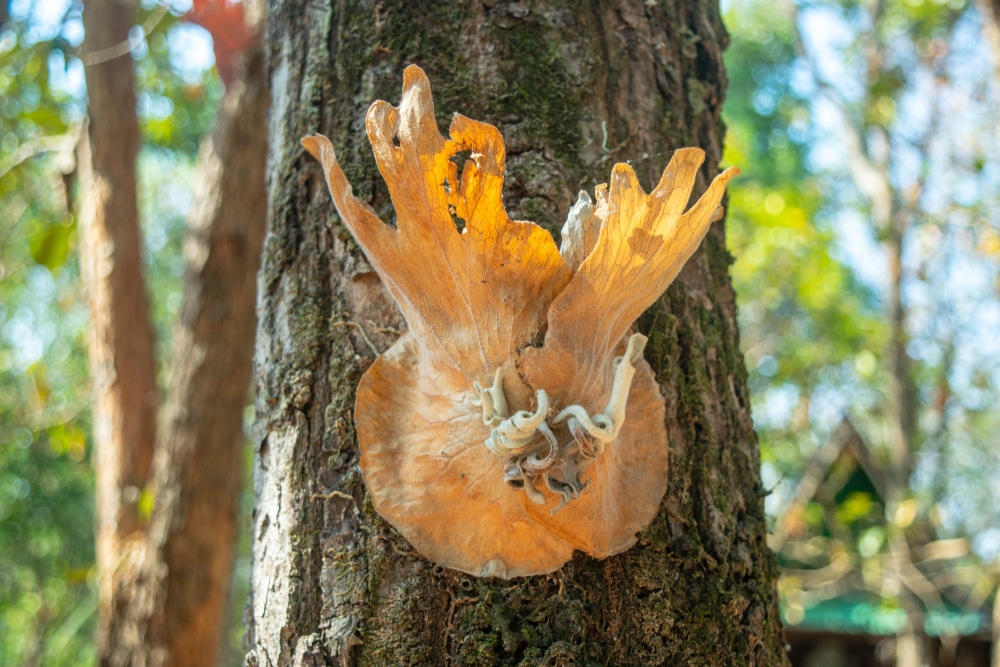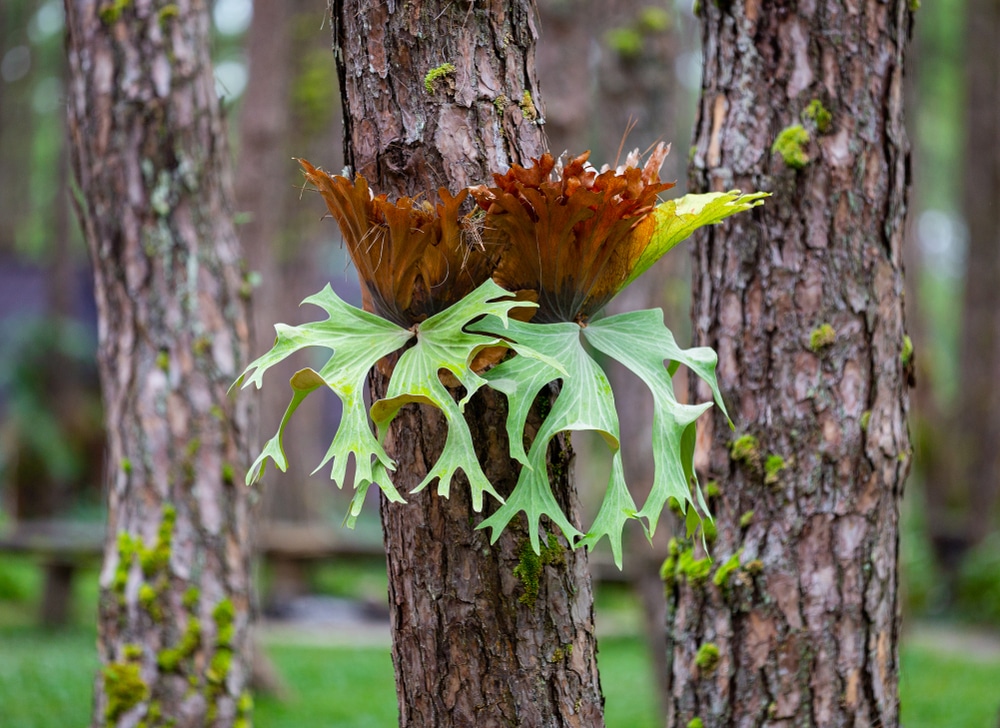Staghorn ferns are unique-looking plants that perform well in various growing conditions. They can help spice up your interiors in hanging baskets or even mounted on a board. Their foliage is stunning and lush. Despite being relatively easy to care for, you’ll need to pay attention to the plant’s needs and requirements to get the most out of this fern species.
Sometimes, things might not go as you plan. And if you don’t manage to meet your staghorn fern’s growing conditions, you may experience issues. But can you save a drying staghorn fern? And if yes, how? We collected all the information you must know on this topic in this essential guide. Keep reading to learn how to revive your gorgeous fern!
Can You Save A Dying Staghorn Fern?

Ferns are evergreen, so if your plant has started to turn brown, its a sign it’s suffering. The key to successfully saving a dying plant is to take prompt action. You must identify what might be causing your fern’s death and be quick at taking adequate measures to solve the issue. So, to keep the story short, yes: you can save a dying staghorn fern.
However, remember that this plant is different from most other plants. In nature, these plants live in trees and grow attached to branches or around the trunk. Staghorn ferns are epiphytic, meaning they live on the surface of other plants.
So, they don’t need soil to grow (even if you can grow them in a well-draining potting mix). And because they don’t rely on their roots as much as other species do, you’ll need to be careful when watering and feeding your plant.
But the measures you must take to save your dying staghorn fern depend on the root cause of the issue. So, jump to the following section to learn more about what may be the problem!
How to Save A Dying Staghorn Fern
Usually, your plant will show signs of distress before dying. So, if you keep a close eye on your staghorn fern, you’ll be able to identify the issue fast.
One of the first steps to save your plant involves removing dead or drying leaves from the fronds. Also, you must look at the base of each “leaf” and check if there are signs of rotting. For instance, black or brown stains are usually a symptom of rotting. In this case, there isn’t much you can do besides avoid overwatering your plant and moving it to a new substrate.
If the plant looks dehydrated, soak its roots in a bucket of water. Doing so will encourage new growth and allow you to save your plant. You may have to add fertilizer to boost the process. However, avoid overdoing it: you will cause more harm than good.
Of course, the key to preventing your staghorn from dying is taking proper care of it. You will have to keep its growing condition stable, water it regularly, plant it in a suitable potting mix and locate it somewhere it will receive the amount of light it needs to thrive.
Why Is My Staghorn Fern Dying?
One of the most common reasons for staghorn ferns to die is following an inappropriate watering schedule. These plants thrive in environments with high humidity.
However, too much moisture can stress your plant, cause rotting, and attract pests and diseases. Eventually, this might result in the death of your fern. Feel the soil with your fingers before adding extra water to prevent this.
Of course, that doesn’t mean you should leave your fern dry. Indeed, too little moisture might also cause plenty of issues.
Additionally, pests might also cause your fern to die. So, keep an eye on your plant and check for the presence of bugs. If you notice something off with your fern, take prompt action.
We recommend starting with organic products before getting into synthetic pesticides to minimize harm to your plant (and beneficial insects).
However, sometimes only chemicals can help you save your plant. In such cases, remember to follow the instructions you find on the label, and don’t forget to identify the bug to purchase the suitable product.
Finally, ensure you know what your staghorn fern needs to thrive. Don’t forget that these plants need light but not too much, as it can burn their leaves. Also, they are usually susceptible to low temperatures: avoid exposing them to conditions below 50°F.
